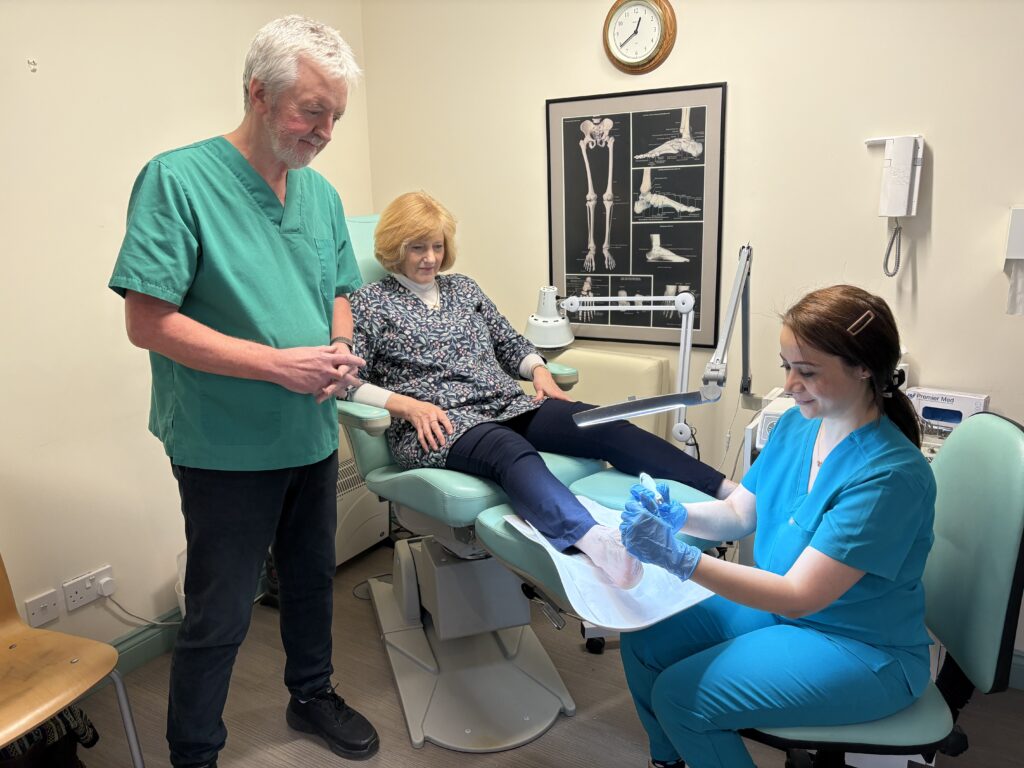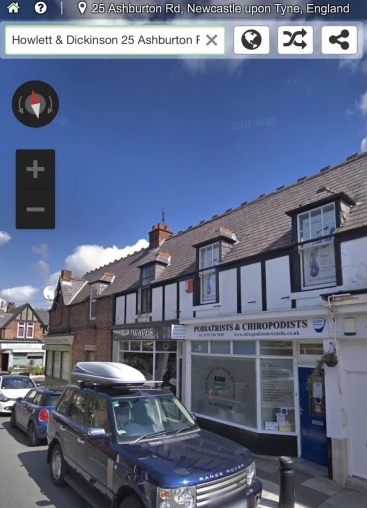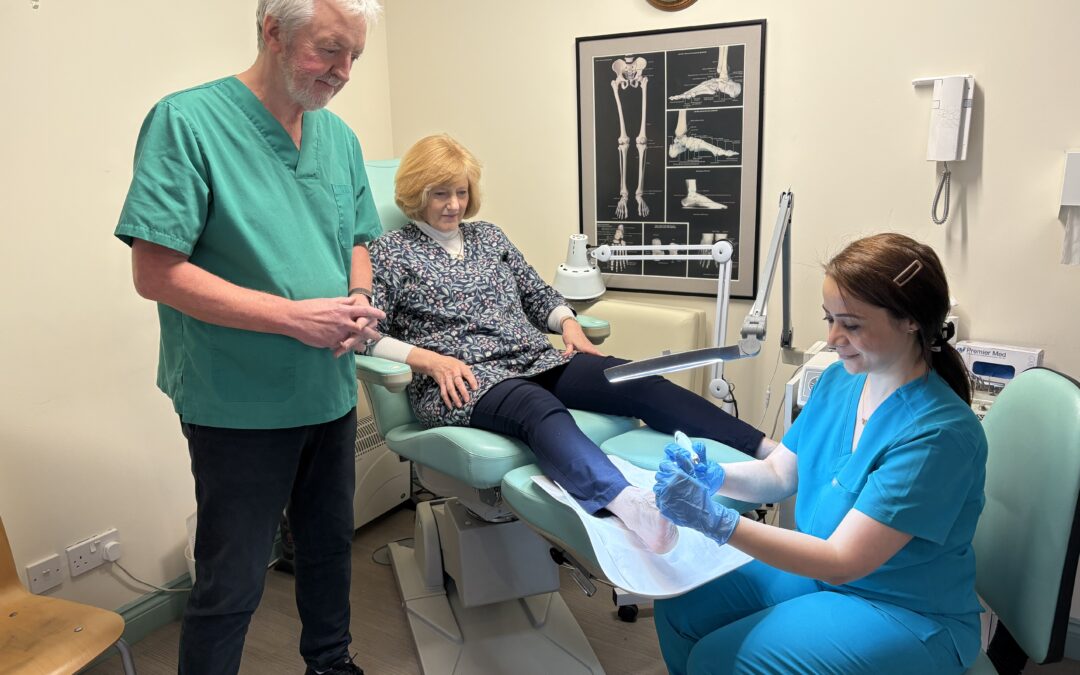There may come a time when you no longer want to treat other people’s feet and, instead, put yours up.
Here’s how to exit your practice the best way.

The following is an unabridged reproduction of an article published in The Podiatrist Magazine November/December 2025 featuring an interview with Myers La Roche and Podiatry Business Central director Dom Watson
“We get people calling us all the time about how they can sell their practice,” Royal College Professional Support Officer Katie Harwood says.
“What many people tend to do is, they’ll get to their planned final year of work having spent years building up their business, only to discover they can’t find a buyer. If you wait until the end, your exit won’t be the best it can be.
“Members need to be thinking about this at the very start of their podiatry or practice-owning journey, not at the end. You should plan well ahead to have a good exit.”
So how can you make it the best? Here are some key areas to consider.
Preparation
The longer you have to prepare, the better. Think about when you would like to retire and work back from that, ideally at least three years.
“Even if you’re not doing anything straightaway, at least you have thought about it and have a realistic idea of your business’s likely value and appeal while you can still optimise them. What you don’t want to do is start thinking about it six months before your target retirement date or base your plans on inaccurate assumptions only to find out that you can’t retire comfortably when you want to.” Katie says.
Practice Valuations
There are several crude rules of thumb in circulation to help you “guesstimate” a rough “ballpark” value for your business. For example, multiplying your average annual turnover from the last five years by 0.75 to give you a low figure, and by 1.25 to give you a high figure.
However, such simplistic approaches need to be treated with extreme caution. They take no account of underlying profit, trading style, trading trend, location or a host of key factors – and the level of variance they provide renders them imprecise and unhelpful!
If you want to explore this topic in more depth, check out our guide on how to value a podiatry business, which breaks down the key valuation methods, common pitfalls, and what buyers are really looking for.
A far better option is to speak to a specialist in this area, such as Dom Watson at Myers La Roche , who can look at your business in detail and provide a more accurate assessment of its genuine realisable value and likely market appeal.

Dominic Watson (left) from Podiatry Business Central celebrates the ownership handover with Mary Darvish (center), the new owner of The Ledbury Foot & Ankle Clinic, and Paul Simmons (right), the outgoing owner.
Understand Your Options
The Royal College’s Profession Support Team is on hand to help members chat through their options.
“There are many different possibilities when it comes to exiting your practice these days,” Katie says. “For example, there are corporate investors who buy podiatry practices, or you might want to sell to somebody who pays in instalments over an extended period.”
Patients and Staff
The people involved with your practice – patients and any employees – are the most important part of your business, so you need to consider how, or even if, you address the issue of exit with them.
The crucial thing to understand is that different practices will benefit from different approaches. For example, if you are selling a limited company, nothing changes with the business status so you don’t actually need to inform patients at all and you certainly don’t want to worry staff for nothing.
So don’t rush into anything – the best first step is to take professional advice from specialists like Dom Watson or the Royal College’s Employment Relations team.
Specialist Legal and Financial Advice
And that leads us to other specialist advice. If you are selling to a friend or colleague, there’s the temptation to sort the process out yourself but it’s important that you get professional legal advice, with the deal drawn up by a solicitor in a proper legal contract.
Because of the sums of money involved, it’s also important to get specialist tax or pension advice at the earliest possible opportunity as part of your exit planning.
Expert Opinion: Dom Watson of Myers La Roche

Dominic Watson
As a specialist in business exit strategies and sales within the independent healthcare sector, Dom Watson and his team at Myers La Roche have helped more than 1,000 practice owners to successfully exit their business over the last 25 years. They noticed more podiatry business owners seeking out help and launched the specialist brand Podiatry Business Central to cater directly to the needs of our profession.
“When people come to me, the first thing I do is find out what their knowledge level and expectations are. Selling a practice is nothing like selling a house, where you can spruce things up to put it on the market. When it comes to selling a practice, the value of it resides not in its aesthetics, but how it performs as a business,” Dom says.
“It’s natural for homeowners to see how much their house is worth by looking at houses for sale on, say Rightmove. In a similar way, practice owners look at the asking prices for practices on sale. But those are aspirational figures, often derived by people who don’t understand the nuances of the podiatry market. So, we must introduce a measure of realism for some, and higher price expectations for others.
“If people come to us early enough, we can address many potential issues. For example, we recently helped one practice whose owners weren’t happy with their initial valuation. By looking at their business and the local podiatry market we identified improvements for them to implement which helped them improve profitability. Six months later they achieved a significantly higher valuation to take to market.
“In another example, a Harley Street-style business might be highly profitable however a huge amount of the value may pertain to the reputation and expertise of the individual practitioner making its performance in the hands of another operator much less predictable. A key exit strategy in this instance will be to put measures in place to reduce the level of owner centricity. Or somebody who is approaching their retirement might allow an otherwise profitable business to wind down, adversely affecting the outcome. Knowledge is power and becoming aware of these factors allows owners to be more strategic and prepare for better outcomes.
“The key thing to understand is it is not one-size-fits-all. In reality it is a ‘market of markets’ and practices with differing enterprise scales, business models, locations, levels of owner centricity and underlying profit will be valued according to the levels of supply/demand and risk/reward for a prospective buyer.
“Another thing we look at is if there is property involved which might be retained to lease to the buyer to provide a passive income.
“That leads into the other aspect that we try to cover – ensuring that sellers are happy post-exit, and not just financially. We take an ethical long-term view about these things, we might advise podiatrists against selling their business and instead help them address the issues that led them to want to sell.
“Finally, we look at what people want to do in retirement. Some years ago, I wrote a book called ‘How To Retire Like a Rockstar’ because I realised many of our clients became bored or their health deteriorated when they retired. How many rockstars do you know who have retired? None, because they love what they get paid to do. So, we look at wealth, health and purpose for people, post-exit. They might think they want to be on the golf course all the time, but the reality can be quite different. Exit planning should not be purely about finance, it needs to truly be three dimensional.”
The Voice of Experience: Paul Simons

Podiatry Succession in Action: Paul Simons Hands Over Ledbury Foot & Ankle Clinic to Mary Darvish
Paul Simons sold his podiatry practice – which he started from scratch 25 years ago – in March 2025.
“I began to plan for this about three years ahead because I had read on a forum that most podiatrists leave it too late. I started doing some research, which was something of a blessing and a curse because it opened my eyes to the massive amount of work that I needed to do,” Paul says.
“The finance and legal dimensions were more complex and required more care than I ever imagined, and there were nuances that I really didn’t grasp. However, Dom Watson and his colleagues were enormously helpful in saving both a lot of time and a lot of stress.
“Getting professional assistance is vital. Inevitably, you are dealing with something that is completely different to your normal experience and skill set, but these professionals can help you see the wood for the trees.”
(Read this article to see how careful succession planning paved the way for a smooth and successful handover.)
Paul’s Advice






Be prepared to invest time over the transition period to maximise patient loyalty for your buyer. When we knew when the handover date was going to be, I booked a community centre and arranged for morning and afternoon tea to be served, inviting all my existing patients to come. We had the Beatles song ‘You say goodbye, and I say hello’ playing! It was a great success.
Take your first step to a brighter future by calling Podiatry Business Central on 0161 929 8389
The sooner you take action, the sooner we will be able to help you maximise business value and attain your personal goals.




